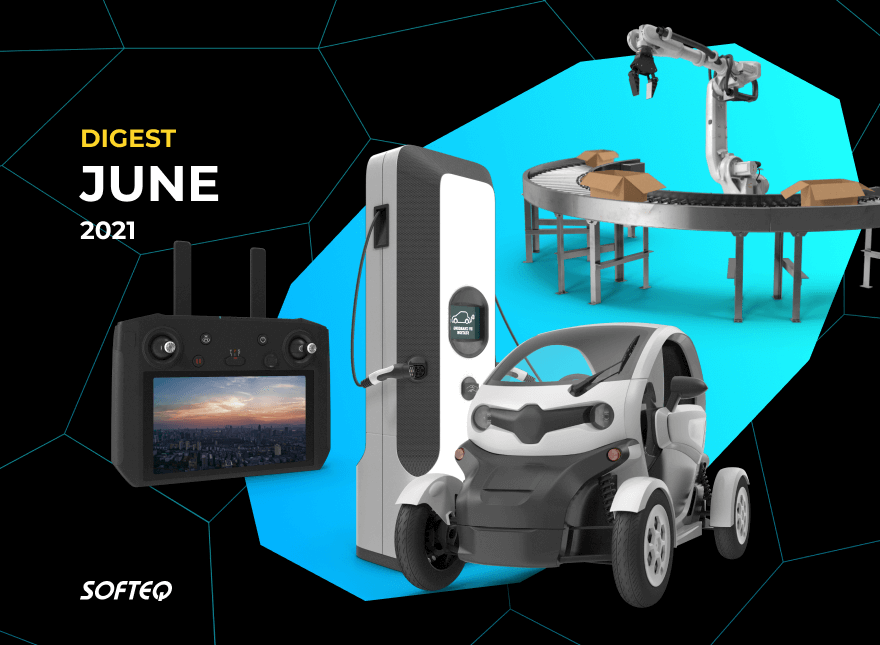This is What Techies Talked About in June

In this issue of the Tech Digest: fighting fake chips that invade the world market, a new AI-powered driving system for some countries, aerial photography to help engineers make cities even smarter. All that and more in a 10-minute read.
Counterfeit Chips and Devices to Invade the Market
Pandemic lockdown has pinched supply of both finished goods and raw materials, while demand for electronic products has skyrocketed. This led to the global chip shortage that experts predict could last until 2023. And some companies have already found an easy way to satisfy unfilled market demand—they deliver fake goods.
Indeed, the world’s electronic component marketplace is already seeing early signs of trouble. Counterfeit chips target production lines, with the potential to shut them down entirely. Learn how large companies detect and avoid fake chips.
IoT System to Early Detect Forest Fires
What if there was an IoT network of sensors that could quickly spot and block forest fires, thus saving costs on wildfire suppression? One IoT startup is on the way to create and test one.
The German startup Dryad Networks wants to use IoT sensors and a wireless-mesh network to detect forest fires within 10 minutes to an hour of when they start. Current methods based on thermal imaging, satellite surveillance, and human smoke spotters need hours or even days to do so. Read about the German’s early warning system and how it can benefit our planet.
AI-based Routing System to Drive Smarter
If you drive in the United States, chances are you can’t remember the last time you bought a paper map, printed out a digital map, or even stopped to ask for directions. Thanks to GPS and the mobile mapping apps on our smartphones and their real-time routing advice, navigation is a solved problem. But if you go outside the USA, for example in developing or fast-growing countries, not so much: providers simply can’t keep up with the pace of infrastructure change.
Scientists from the Qatar Computing Research Institute (QCRI) offer a pretty effective solution to solve the issue—an AI-based routing system fed by real-time vehicle data. In this system, a road network can be interpreted as a giant graph in which every intersection is a node and every road is an edge. Follow the link to find out how the system sees where traffic really is going, and then predicts the best routes.
AI-Powered Manufacturing Inspection Tool to Identify Defects in Products
The manufacturing industry has long lacked adequate equipment and tools to help engineers detect flaws in products. Google Cloud, one of the key verticals currently in manufacturing, is on its way to win more customers in this space.
The cloud giant has recently launched Visual Inspection AI, a new tool to help manufacturers identify defects in products before they're shipped. Manufacturers have for years used AutoML, Google's general-purpose AI product for quality control, but Visual Inspection AI is more accurate and efficient. Based on pilots run by several Google Cloud customers, the tool can build accurate models with up to 300 times fewer human-labelled images than general-purpose ML platforms. Learn more about the platform and how the industry can benefit from using it.
GIS and Aerial Photography to Promote Smart City Initiatives
Smart city concepts depend on sensors, cameras, and handheld devices that collect and contextualize data on geographic information systems and other geospatial solutions. Using this data, engineers and authorities can make decisions on assets, resources, road situations, and traffic management. One key element in all of this data is aerial photography, which enhances geospatial referencing capabilities and provides a platform for 3D modeling.
Using aerial and geospatial photography isn't new to city engineers, but what is new for some is integrating this data into traditional geographic information systems (GIS). Navigating through the geospatial vendors and choices at a time when the COVID pandemic has constricted city budgets is a challenge. Here are ways to overcome the digital hurdles.
